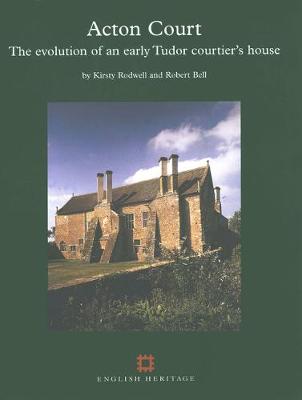For more than 400 years a substantial moated manor house at Iron Acton in South Gloucestershire was occupied first by the Acton family and then by the Poyntz family. Successive remodelllings and extensions of the 13th-century building reflected the growth in wealth of the Actons, and later the increasing prosperity and rise to royal favour of several Poyntz family heirs. During a royal progress in the summer of 1535, Henry VIII with Queen Anne Boleyn and their retinue stayed briefly at Acton Court. There is evidence from excavation, from tree-ring analysis of structural timbers, and from internal layout and decoration that the surviving east range was built especially for the royal visit. In the central room of this range an elaborate painted frieze in the 'antike' work survives, thought to have been executed by craftsmen employed by the Royal Works. Debris from a ceiling and fireplace overmantel represent one of the earliest uses in England of moulded stucco decoration. Exotic glass and ceramic tableware had been brought to the site, also probably for the royal visit. By the mid-1550s, new north and west ranges had been built, the south range modernised and the moat filled in, giving Acton Court the outwardly regular appearance of a courtyard house. In architectural and decorative style, these major works were innovatory: in the north range, a classical stone fireplace was installed in the first-floor long gallery, which was decorated with a painted frieze of Latin texts. The Poyntz family's fortunes later diminshed, the estate was sold, the building was reduced in size and converted into a farmhouse - but, paradoxically, this decline resulted in the unique preservation of the mid-16th-century appearance of the surviving structures.
- ISBN10 1848021313
- ISBN13 9781848021310
- Publish Date 15 February 2013 (first published 13 August 2004)
- Publish Status Active
- Publish Country GB
- Imprint Historic England
- Edition Digital original
- Format eBook
- Pages 466
- Language English
